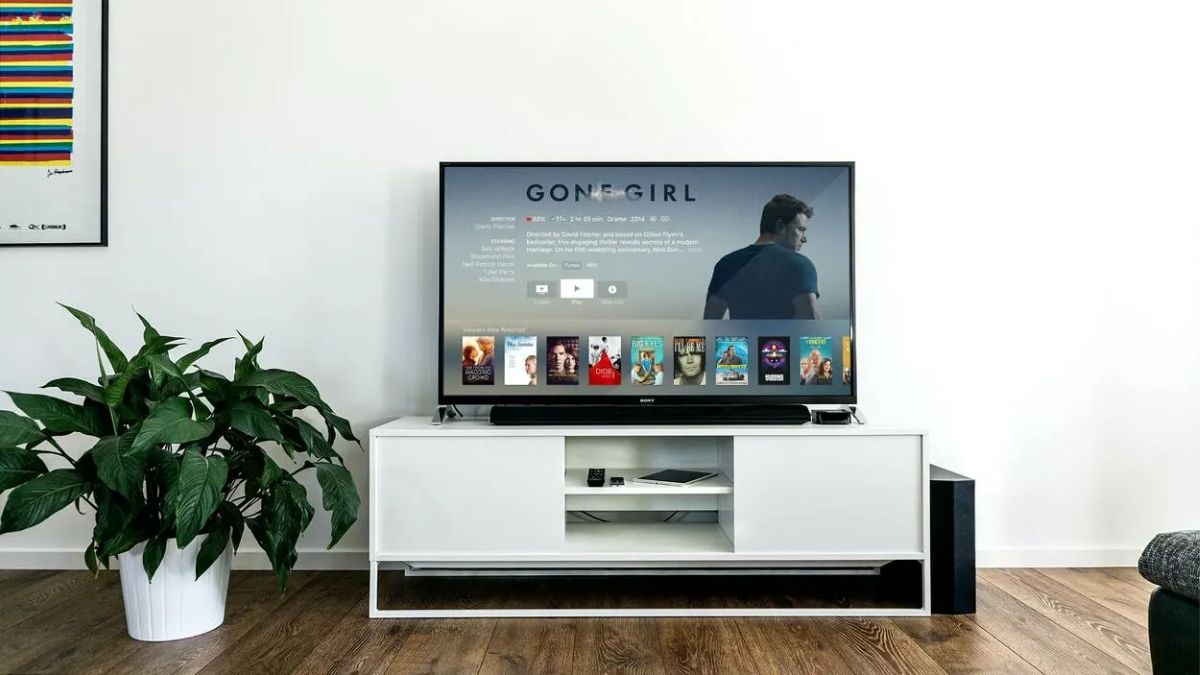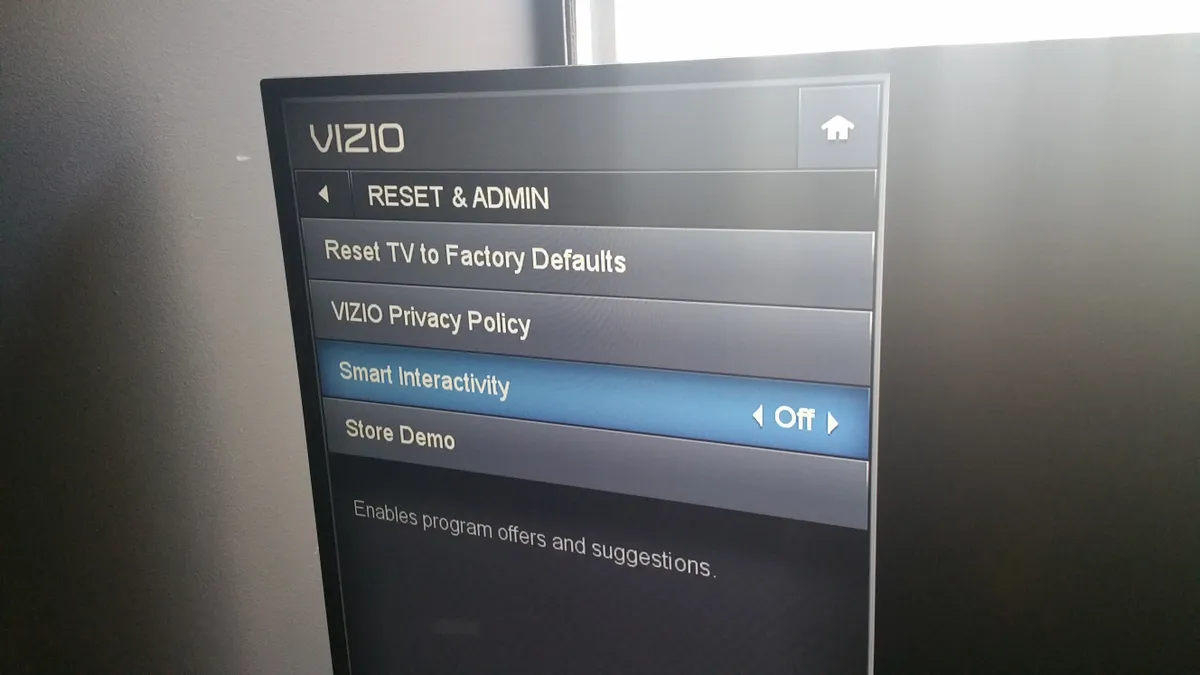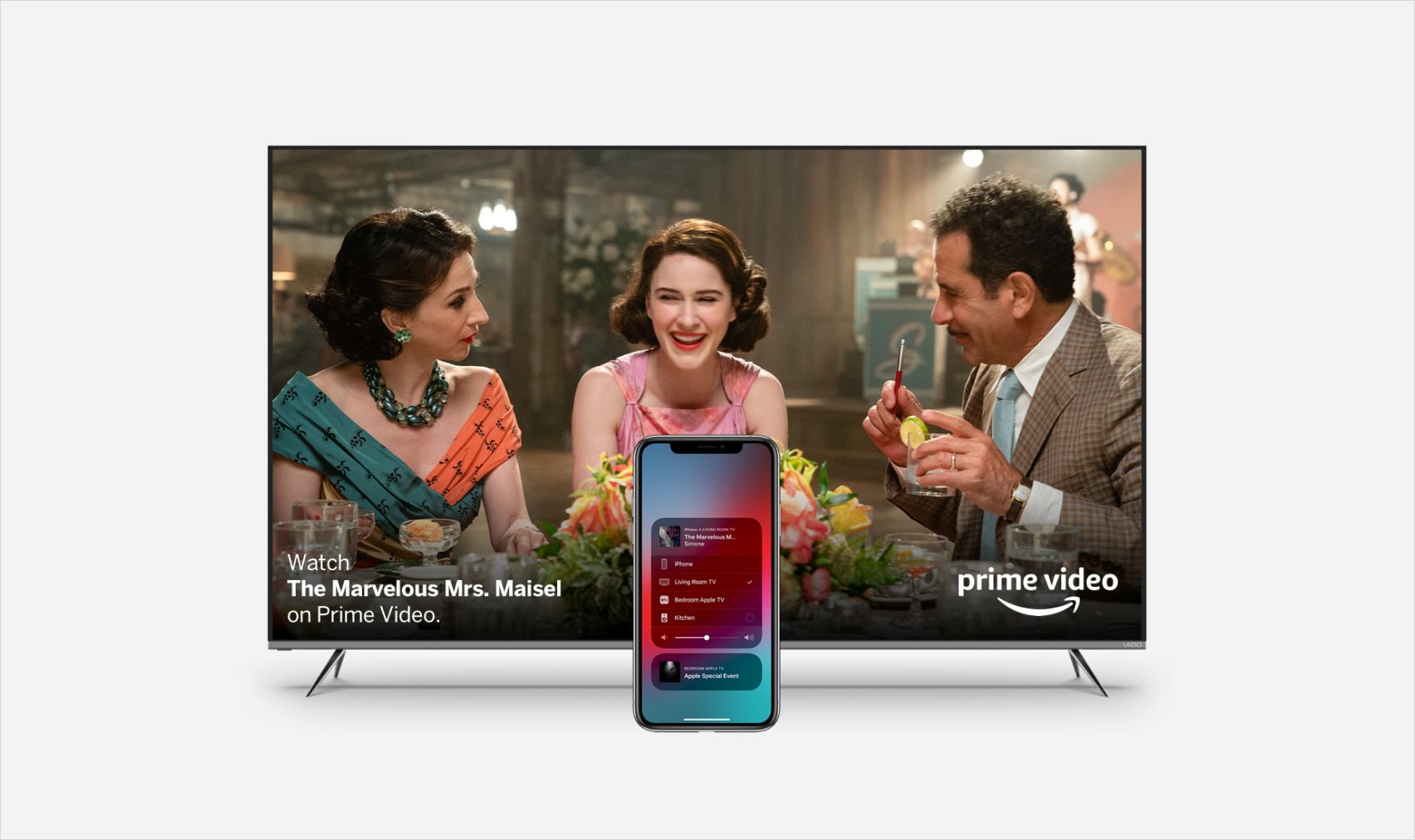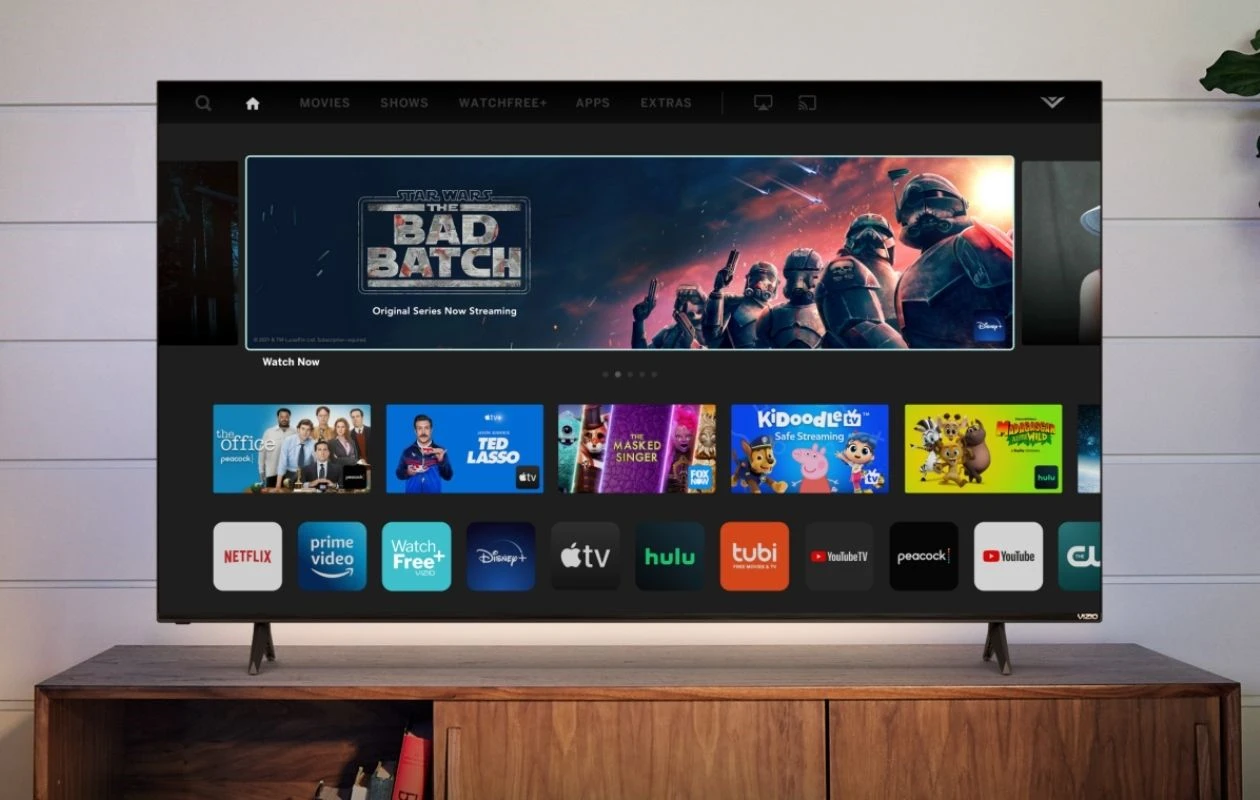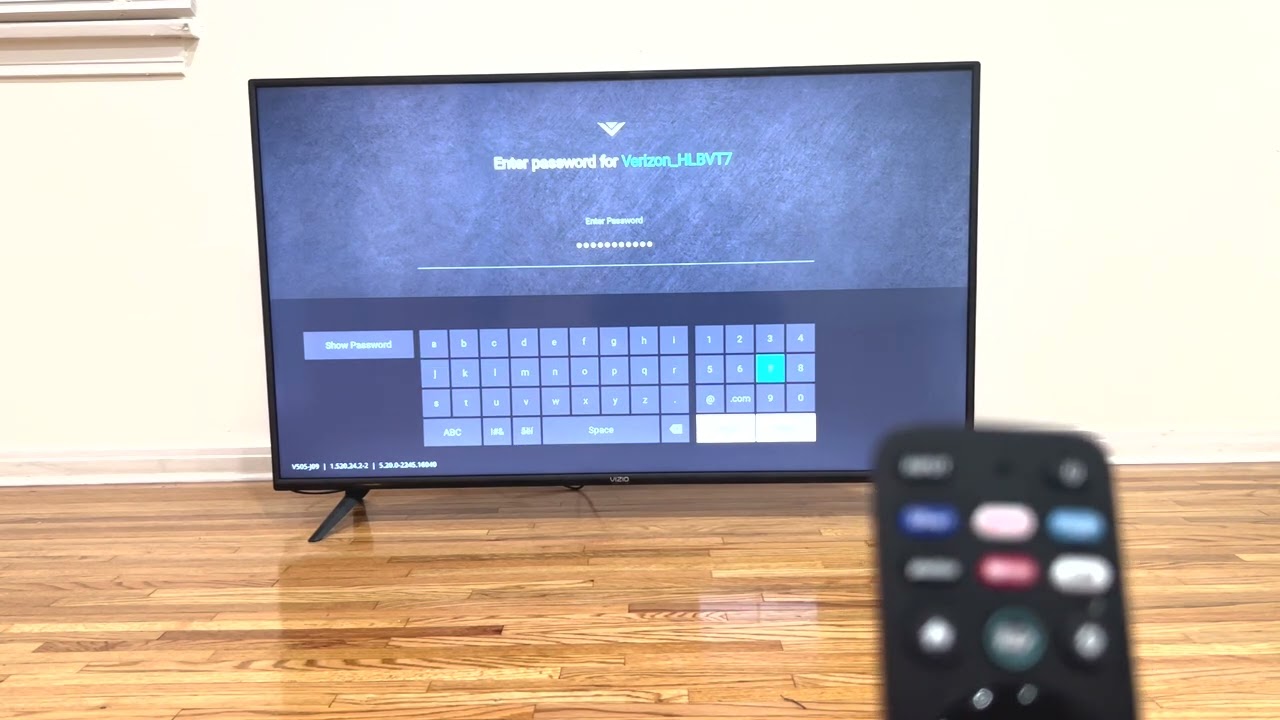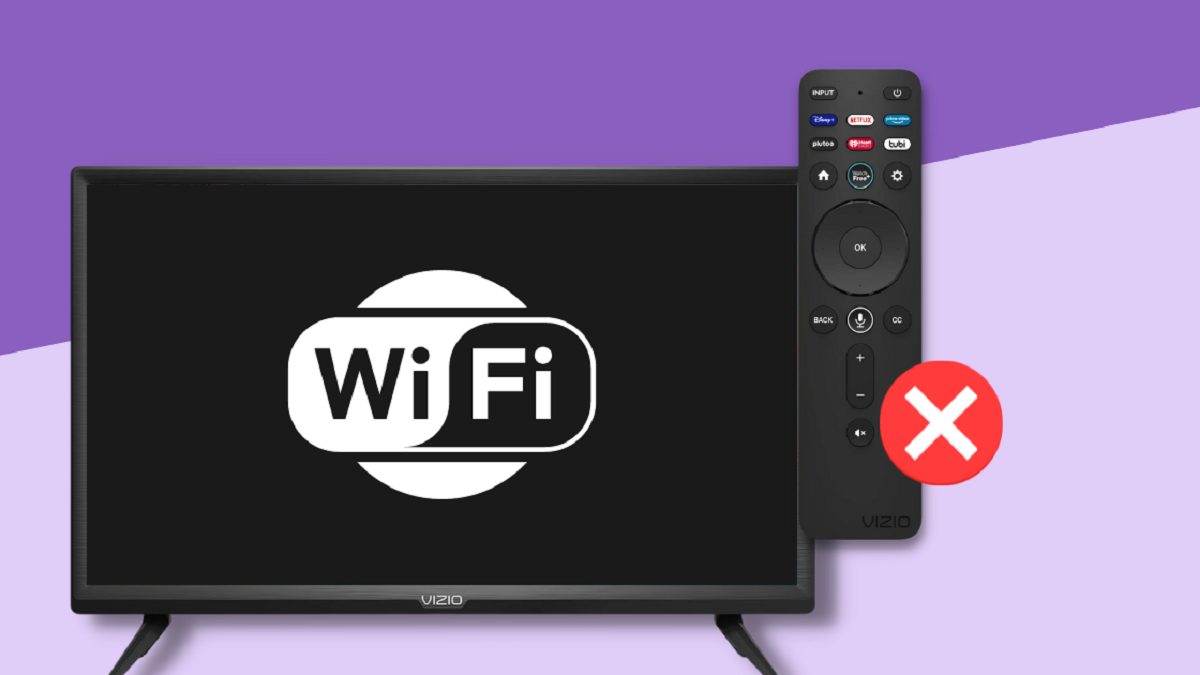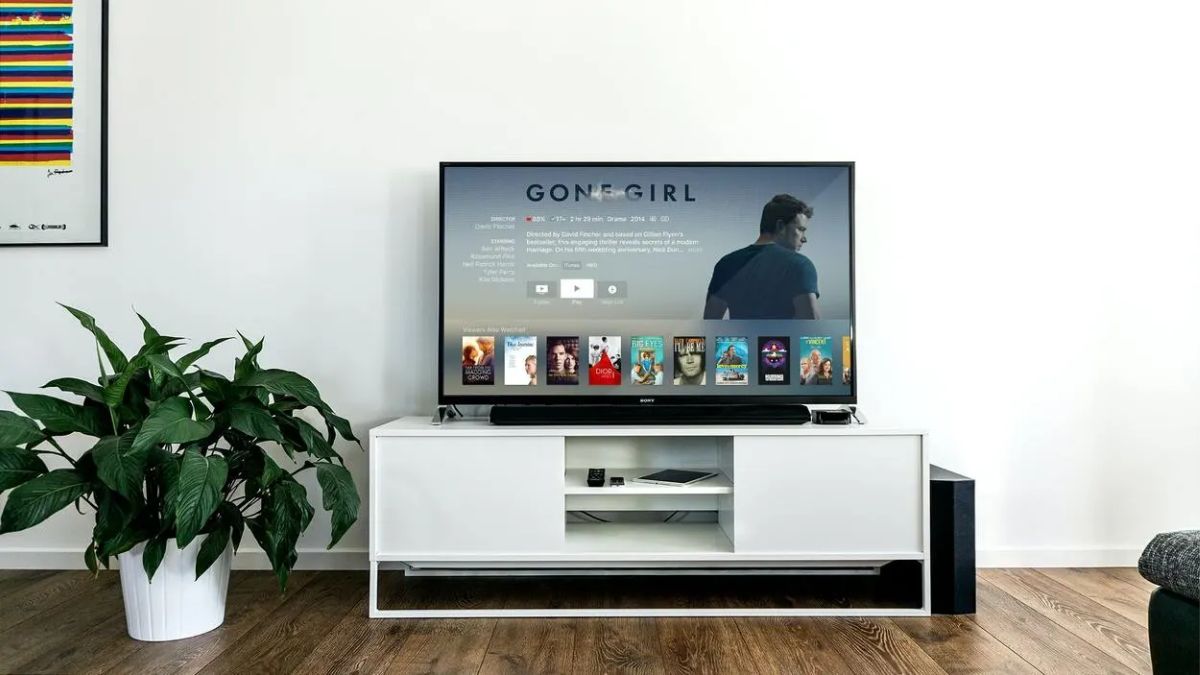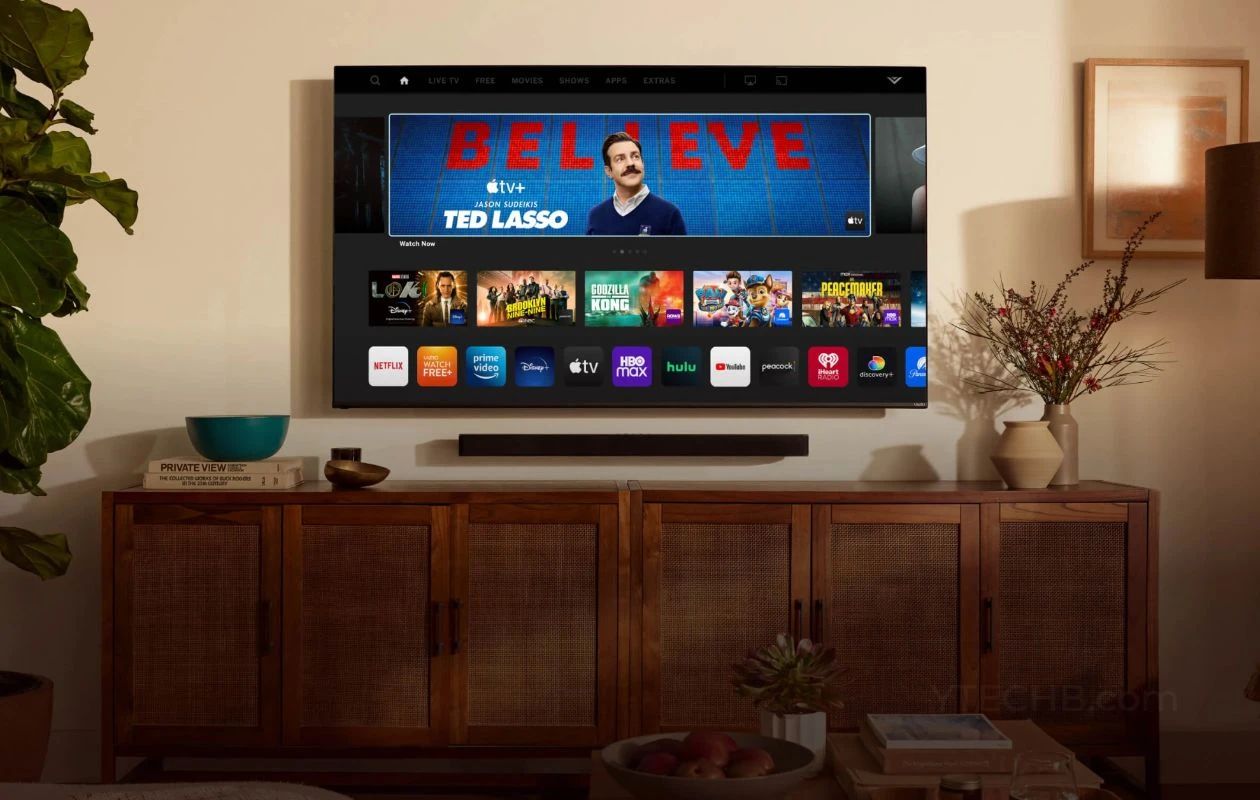Possible Reasons why your Vizio Smart TV is not connecting to Wi-Fi
If you’re experiencing difficulties connecting your Vizio Smart TV to Wi-Fi, there could be several reasons behind the issue. Understanding these potential causes will help you troubleshoot and resolve the problem effectively. Here are some common factors to consider:
- Wi-Fi Connection Settings: Incorrect Wi-Fi settings could prevent your Vizio Smart TV from connecting to your network. Make sure the SSID (network name) and password are entered correctly.
- Router Placement and Distance: The location of your router plays a crucial role in Wi-Fi performance. Ensure that your Vizio Smart TV is within a reasonable range and in a position that allows for a strong Wi-Fi signal.
- Internet Service Provider (ISP) Issues: Temporary disruptions in your internet service or ISP-related problems can impact your TV’s connection. Check if other devices are experiencing similar issues or contact your ISP for assistance.
- Firmware or Software Update: Outdated firmware or software on your Vizio Smart TV may cause connectivity problems. Ensure that your TV has the latest updates installed by navigating to the settings menu.
- Network Traffic and Overloading: High network traffic, especially during peak hours, can lead to connectivity issues. Try connecting your TV at a different time or consider upgrading your internet plan for better performance.
- Wireless Interference: Other devices or appliances operating on the same frequency can interfere with your Wi-Fi signal. Keep your TV away from cordless phones, microwaves, and other electronics to minimize interference.
- Wi-Fi Network Password and Security Settings: Verify that your Wi-Fi network password is correct and that your TV’s security settings match those of your router. Incompatible security settings can hinder the connection.
- TV Hardware or Software Issues: Occasionally, there may be hardware or software issues specific to your Vizio Smart TV that prevent it from connecting to Wi-Fi. Contact the Vizio support team for assistance in diagnosing and resolving any technical problems.
- Resetting Network Settings on your Vizio Smart TV: If everything else fails, try resetting the network settings on your TV. This will clear any network configurations and allow you to set up the connection from scratch.
- Contacting Vizio Support: If all troubleshooting steps prove unsuccessful, reaching out to the Vizio support team will provide you with expert guidance and assistance in resolving the Wi-Fi connectivity issue.
By considering these possible causes and taking the appropriate steps to address them, you can regain a stable Wi-Fi connection on your Vizio Smart TV. Remember that each situation may vary, so it is essential to troubleshoot based on your specific circumstances.
Wi-Fi Connection Settings
When your Vizio Smart TV is not connecting to Wi-Fi, one of the first things to check is the Wi-Fi connection settings. Incorrectly entered or outdated settings can prevent your TV from establishing a stable connection with your network. Here are some steps to troubleshoot this issue:
1. Double-check the SSID and Password: Ensure that you have correctly entered the Wi-Fi network name (SSID) and password. Pay attention to any capitalization or special characters. Verify if the same credentials work with other devices to rule out any typing errors.
2. Hidden Network: If your Wi-Fi network is configured to be hidden, your Vizio Smart TV may have trouble finding and connecting to it. You will need to manually enter the network details in the TV’s Wi-Fi settings. Consult your TV’s user manual for instructions on how to connect to a hidden network.
3. DHCP or Static IP: Most home networks use DHCP (Dynamic Host Configuration Protocol) to assign IP addresses automatically. However, if you have a complex network setup or are using a static IP address, make sure that the TV’s network settings match those of your router. Incorrect IP configurations can lead to connectivity issues.
4. DNS Settings: DNS (Domain Name System) translates human-readable domain names into IP addresses. By default, your Vizio Smart TV should use your router’s DNS settings. However, if you have custom DNS settings, ensure that they are correctly configured on your television.
5. Channel Bandwidth: Wi-Fi routers support different channel bandwidths, such as 20 MHz or 40 MHz. If your Vizio Smart TV only supports 20 MHz bandwidth, make sure that your router is set to use this option. A mismatch in channel bandwidth can cause connectivity problems.
If you have checked and confirmed that your Wi-Fi connection settings are correct, but your Vizio TV still cannot connect to the network, proceed to troubleshoot other possible causes.
Remember that Wi-Fi connection issues can be specific to your network setup and hardware. Therefore, it’s important to follow the troubleshooting steps that best match your situation. If the problem persists, continue exploring the other possible reasons why your Vizio Smart TV is not connecting to Wi-Fi.
Router Placement and Distance
The placement and distance of your router from your Vizio Smart TV can significantly impact the Wi-Fi signal strength and, consequently, the TV’s ability to connect to the network. Here are some factors to consider when it comes to router placement and distance:
1. Central Location: Position your router in a central location within your home or the room where your TV is located. This allows for equal coverage in all directions and minimizes the distance between the router and the TV.
2. Avoid Obstacles: Keep your router away from walls, furniture, metal objects, and other obstacles that can obstruct the Wi-Fi signal. These obstructions can weaken the signal and hinder the TV’s ability to connect to the network.
3. Elevation: If possible, place the router on a higher shelf or mount it on the wall. This helps to improve the signal propagation and minimize interference, especially if there are multiple floors or thick walls in your home.
4. Distance: The distance between the router and the Vizio Smart TV affects signal strength. Ideally, try to keep the TV within 30 feet (9 meters) of the router for optimal performance. If the distance is greater, consider using a Wi-Fi extender or a mesh network system to extend the wireless coverage.
5. Wireless Interference: Other electronic devices, such as cordless phones, microwave ovens, and baby monitors, can interfere with the Wi-Fi signal. Keep your router away from these devices to minimize interference and maintain a stable connection.
6. Antenna Orientation: If your router has adjustable antennas, experiment with their orientation. Sometimes, positioning the antennas vertically or horizontally can improve signal strength in specific directions, depending on the TV’s location.
By carefully considering the placement and distance of your router, you can optimize the Wi-Fi signal strength, which improves the chances of your Vizio Smart TV successfully connecting to the network. If adjusting the router placement does not resolve the issue, proceed to troubleshoot other possible reasons for the connectivity problem.
Remember that each home’s layout and construction may vary, so it may take some experimentation to find the ideal router placement for your specific situation.
Internet Service Provider (ISP) Issues
Sometimes, the difficulties in connecting your Vizio Smart TV to Wi-Fi may be related to issues with your Internet Service Provider (ISP). Here are a few potential ISP-related problems that could disrupt your TV’s connection:
1. Service Outages: Temporary service outages or maintenance activities by your ISP may result in a loss of internet connection. Check if other devices in your home can access the internet to determine if the issue is isolated to your TV or if it’s a broader connectivity problem.
2. Bandwidth Limitations: Some ISPs impose data caps or bandwidth limitations. If you have reached your monthly data limit, it could affect your Vizio Smart TV’s ability to connect to the network. Contact your ISP to clarify if your plan has any usage restrictions.
3. Network Congestion: During peak usage hours, network congestion can occur, leading to slower internet speeds. If your ISP’s network is experiencing heavy traffic, it might impact your TV’s connection. Try connecting your TV at a different time to see if the issue persists.
4. Authentication Issues: ISPs may require you to authenticate your account or device before accessing the internet. If you have recently made changes to your account or upgraded your service, ensure that you have completed the necessary authentication steps to establish a connection.
5. Router Compatibility: In some cases, certain routers may not be fully compatible with your ISP’s network infrastructure. Check if there are any reported compatibility issues or firmware updates for your specific router model.
If you suspect that your Vizio Smart TV’s Wi-Fi connectivity issues are related to your ISP, here are a few steps you can take to address the problem:
1. Contact your ISP: Reach out to your Internet Service Provider’s customer support and inform them about the connectivity issues you are experiencing. They can help diagnose the problem and provide guidance on resolving any ISP-related issues.
2. Restart Router: Try power cycling your router by unplugging it from the power source, waiting for a few seconds, and then plugging it back in. Sometimes, this simple step can resolve minor connectivity problems.
3. Consider Upgrading Your Plan: If you regularly experience slow speeds or network congestion, it may be time to consider upgrading your internet plan to a higher bandwidth or a more suitable package for your needs.
Remember, your ISP is responsible for providing you with a stable internet connection. By addressing any potential ISP-related issues, you can improve the chances of your Vizio Smart TV successfully connecting to Wi-Fi.
Firmware or Software Update
Outdated firmware or software on your Vizio Smart TV can cause connectivity issues and prevent it from connecting to Wi-Fi. Regular updates are essential for optimal performance and compatibility with the latest network protocols. Here’s what you need to know about firmware and software updates:
1. Check for Updates: Navigate to the settings menu on your Vizio Smart TV and look for the option to check for updates. If a new firmware version is available, follow the on-screen instructions to download and install it. This process may take a few minutes, so be patient.
2. Automatic Updates: Many smart TVs, including Vizio models, offer an option to enable automatic updates. When enabled, the TV will check for and install updates regularly without user intervention. Ensure that this setting is enabled to stay up to date with the latest firmware and software releases.
3. Benefits of Updates: Firmware and software updates often include bug fixes, security patches, performance enhancements, and new features. By keeping your Vizio Smart TV updated, you can address any known connectivity issues and ensure compatibility with the latest Wi-Fi standards and protocols.
4. Power Cycle After Updating: After installing a firmware or software update, it’s a good practice to perform a power cycle on your TV. Unplug it from the power source, wait for around 30 seconds, and then plug it back in. This helps refresh the TV’s system and ensures that the update takes effect properly.
5. Network Connection during Update: Ensure that your Vizio Smart TV remains connected to the internet during the update process. Interrupting the update or disconnecting from Wi-Fi can cause errors and incomplete installations, leading to further connectivity issues.
If you have updated your Vizio Smart TV’s firmware and software and are still experiencing Wi-Fi connection problems, continue troubleshooting the other potential causes.
Regularly updating your TV’s firmware and software is crucial to maintain a stable connection and enjoy the best possible performance. It’s advisable to check for updates periodically or enable automatic updates to ensure that your Vizio Smart TV remains up to date.
Network Traffic and Overloading
Network traffic and overloading can contribute to connectivity issues when trying to connect your Vizio Smart TV to Wi-Fi. When there is high network congestion or an overload of devices, the available bandwidth may be insufficient to establish a stable connection. Here are some factors to consider when dealing with network traffic and overloading:
1. Peak Hours: During peak usage periods, such as evenings or weekends, internet traffic tends to be heavier. This increased demand can result in slower speeds and difficulties connecting your TV to Wi-Fi. Consider connecting your Vizio Smart TV during off-peak hours to minimize the impact of network congestion.
2. Bandwidth Limitations: If you have a limited bandwidth plan, streaming content on multiple devices simultaneously can put a strain on your connection. Ensure that other devices on your network are not consuming excessive bandwidth, as this can affect the TV’s ability to connect reliably.
3. Streaming Services: Streaming services like Netflix, Hulu, or YouTube can consume a significant amount of bandwidth. If multiple devices are streaming content simultaneously, it can lead to network congestion. Limiting the number of concurrent streaming sessions or adjusting the streaming quality settings can alleviate the strain on your network.
4. Internet Plan: In some cases, upgrading your internet plan to a higher speed or a plan with a larger bandwidth allocation can improve network performance. Contact your Internet Service Provider (ISP) to discuss available options that better meet your streaming needs.
5. Router Limitations: Older or low-end routers may struggle to handle multiple devices and bandwidth-intensive activities. Consider upgrading to a more capable router that can handle the demands of your network and provide a stronger Wi-Fi signal for your Vizio Smart TV.
6. QoS Settings: Quality of Service (QoS) settings on your router allow you to prioritize specific devices or applications. By setting your TV as a high-priority device in the QoS settings, you can ensure it receives adequate bandwidth even during periods of network congestion.
If you suspect network traffic and overloading to be the cause of your Vizio Smart TV’s Wi-Fi connectivity issues, there are a few steps you can take to address the problem:
1. Disconnect Unnecessary Devices: Temporarily disconnect devices that are not in use or are consuming excessive bandwidth. This will free up available bandwidth for your Vizio Smart TV and improve its chances of connecting successfully to Wi-Fi.
2. Limit Background Activities: Background activities such as software updates or cloud backups can consume bandwidth without your knowledge. Ensure that such activities are not taking place during your Vizio Smart TV’s connection attempt.
3. Ethernet Connection: If possible, consider connecting your Vizio Smart TV to the router using a wired Ethernet connection. This eliminates the reliance on Wi-Fi and can provide a more stable and consistent connection.
By being mindful of network traffic and taking steps to alleviate congestion, you can improve your chances of successfully connecting your Vizio Smart TV to Wi-Fi. However, if the issue persists, continue troubleshooting other possible causes.
Wireless Interference
Wireless interference can disrupt the Wi-Fi signal and prevent your Vizio Smart TV from connecting to the network. Interference can be caused by various devices and objects operating on the same frequency or interfering with the Wi-Fi signal. Here are some factors to consider when addressing wireless interference:
1. Nearby Devices: Other electronic devices, such as cordless phones, baby monitors, or microwave ovens, can operate on the same frequency as your Wi-Fi network and cause interference. Keep your Vizio Smart TV away from these devices to minimize signal disruption. If possible, switch to devices that operate on different frequencies or use wired connections instead.
2. Physical Obstructions: Thick walls, metal objects, and large furniture can block or weaken the Wi-Fi signal. Ensure that there are no physical obstructions between your Vizio Smart TV and the Wi-Fi router. Consider repositioning the router or the TV to optimize the signal strength and reduce interference.
3. Neighbor Networks: If you live in a densely populated area, there may be multiple Wi-Fi networks in close proximity. These networks can interfere with each other, causing connectivity issues. Use a Wi-Fi analyzer app to check for overcrowded channels and change your router’s channel to a less congested one.
4. Dual-Band Router: If your Vizio Smart TV supports both 2.4GHz and 5GHz frequencies, consider connecting it to the less congested 5GHz band. The 5GHz band typically experiences less interference, providing a more stable and reliable connection.
5. Wi-Fi Extender: If the Wi-Fi signal is weak in the area where your Vizio Smart TV is located, consider using a Wi-Fi extender or a mesh network system. These devices help extend the Wi-Fi coverage and improve signal strength, minimizing the impact of interference.
6. Router Placement: Proper placement of your Wi-Fi router can help reduce interference. Position the router away from other electronic devices, metal objects, and obstructions. Elevating the router or using external antennas can also improve signal strength and reduce interference.
By addressing potential sources of wireless interference, you can optimize the Wi-Fi signal strength and increase your Vizio Smart TV’s chances of successfully connecting to the network. However, if the issue persists, continue troubleshooting other potential causes.
Wi-Fi Network Password and Security Settings
The Wi-Fi network password and security settings play a crucial role in connecting your Vizio Smart TV to Wi-Fi. Incorrectly entered or incompatible settings can prevent your TV from establishing a secure and reliable connection. Here are some factors to consider when addressing Wi-Fi network password and security settings:
1. Network Password: Double-check the Wi-Fi network password you are entering on your Vizio Smart TV. Pay attention to any capitalization, spelling, or special characters. If you are unsure of the password, you can find it on your router’s settings page or consult your network administrator.
2. Encryption Type: Ensure that the encryption type set on your Vizio Smart TV matches the one configured on your Wi-Fi router. Common encryption types include WEP, WPA, or WPA2. Setting a mismatched encryption type can cause authentication failures and prevent the TV from connecting to Wi-Fi.
3. MAC Address Filtering: Some routers use MAC address filtering to allow or block specific devices from accessing the network. Verify that your Vizio Smart TV’s MAC address is listed as an allowed device in your router’s settings. Alternatively, you can disable MAC filtering temporarily to troubleshoot the connection issue.
4. Hidden SSID: If your Wi-Fi network is configured to be hidden (i.e., the SSID is not broadcasted), you will need to manually enter the network name on your Vizio Smart TV. Check your router’s settings to confirm the SSID and enter it correctly on your TV.
5. Guest Networks: Some routers offer separate guest networks for visitors. Make sure you are connecting your Vizio Smart TV to the main network and not the guest network. The guest network may have different security settings or restrictions that can prevent your TV from connecting.
6. Router Firewall Settings: Routers typically have firewall settings that can block certain types of traffic. Check your router’s settings to ensure that it is not blocking any necessary traffic for your Vizio Smart TV to connect to Wi-Fi. Temporarily disabling the firewall can help determine if it is causing any connection issues.
By ensuring the accuracy of your Wi-Fi network password and verifying the compatibility of your security settings, you can increase the likelihood of your Vizio Smart TV successfully connecting to the network. However, if the issue persists, continue troubleshooting other potential causes.
TV Hardware or Software Issues
Occasionally, hardware or software issues specific to your Vizio Smart TV can contribute to connectivity problems when trying to connect to Wi-Fi. Understanding and addressing these potential issues can help resolve the problem. Here are some factors to consider when dealing with TV hardware or software issues:
1. Power Cycle the TV: Sometimes, performing a power cycle can resolve temporary software or hardware glitches. Turn off your Vizio Smart TV, unplug it from the power source, wait for a few minutes, and then plug it back in. Power it on and attempt to reconnect to Wi-Fi.
2. Software Updates: Ensure that your Vizio Smart TV has the latest firmware and software updates installed. Outdated software can cause compatibility issues with your Wi-Fi network. Check for updates in the TV’s settings menu or consult the manufacturer’s website for the latest software version for your TV model.
3. Reset Network Settings: If your TV’s network settings are misconfigured, resetting them to default may help resolve the connectivity issue. Navigate to the network settings menu on your Vizio Smart TV and look for the option to reset or restore network settings. Keep in mind that this will remove any saved Wi-Fi networks and require you to set up the connection again.
4. Factory Reset: As a last resort, you can try performing a factory reset on your Vizio Smart TV. This will revert all settings, including the network configuration, back to the original state. Keep in mind that a factory reset will erase all personalized settings and downloaded apps, so make sure to back up any important data beforehand.
5. Contact Vizio Support: If none of the above steps resolve the issue, it’s a good idea to reach out to Vizio’s customer support. They can provide specific troubleshooting steps for your TV model and help diagnose any hardware or software-related problems that may be causing the connectivity issue.
Remember, hardware or software issues with your Vizio Smart TV can be unique to your specific model. Following the recommended troubleshooting steps and seeking assistance from the manufacturer’s support team will help you address these issues effectively.
Resetting Network Settings on your Vizio Smart TV
If you are still experiencing difficulties connecting your Vizio Smart TV to Wi-Fi, resetting the network settings might help resolve the issue. Resetting the network settings will clear any saved network configurations and allow you to set up the connection from scratch. Here’s how you can reset the network settings on your Vizio Smart TV:
1. Open the Menu: Use your TV remote to navigate to the menu options on your Vizio Smart TV. Look for the settings menu, which is typically represented by a gear or a wrench icon.
2. Access Network Settings: Within the settings menu, locate the network or Wi-Fi options. This may be labeled as “Network,” “Wireless,” or “Wi-Fi Settings.” Select it to access the network settings.
3. Reset Network Settings: Look for the option to reset the network settings. The exact wording may vary depending on your TV model. It could be labeled as “Reset Network,” “Restore Defaults,” or something similar. Select this option to proceed with the reset.
4. Confirm the Reset: You will likely be prompted to confirm the network settings reset. Read the on-screen message and follow the instructions to confirm the reset. Keep in mind that this action will erase any saved Wi-Fi networks and settings associated with the network.
5. Set Up Wi-Fi Connection: After the network settings reset, your Vizio Smart TV will no longer have any saved Wi-Fi configurations. To reconnect to Wi-Fi, select the network or Wi-Fi settings again and choose the option to set up a new Wi-Fi connection.
6. Follow On-Screen Prompts: Depending on your TV model, you may be required to enter the SSID (network name) and password for your Wi-Fi network. Follow the on-screen prompts to enter the necessary information and establish the connection.
By resetting the network settings on your Vizio Smart TV, you start with a clean slate and eliminate any potential misconfigured settings that might be causing the connectivity issue. If the problem persists even after resetting the network settings, continue troubleshooting with other potential causes or consider contacting Vizio support for further assistance.
Contacting Vizio Support
If you have exhausted all troubleshooting options and are still unable to connect your Vizio Smart TV to Wi-Fi, it is advisable to reach out to Vizio’s customer support for further assistance. Vizio’s support team is equipped with the knowledge and expertise to help diagnose and resolve complex connectivity issues. Here’s what you need to know about contacting Vizio support:
1. Online Support: Visit Vizio’s official website and navigate to the support section. Look for the contact or customer support page, which typically provides options for live chat, email support, or an online support form. This allows you to describe the issue in detail and receive guidance from a support representative.
2. Phone Support: Vizio also provides phone support for customers. Check the support page on their website for the phone number specific to your region. Calling Vizio support can enable real-time troubleshooting and personalized assistance from a knowledgeable representative.
3. Detailed Description: When contacting Vizio support, it is essential to provide a detailed description of the issue you are facing. Include information such as the specific error message displayed (if any), the steps you have already taken to troubleshoot, and any relevant details about your network setup. The more information you can provide, the better equipped the support team will be to assist you effectively.
4. Serial Number and Model Information: Have your Vizio Smart TV’s serial number and model information readily available when contacting support. This helps ensure that the support representative can access the necessary technical specifications and provide targeted support for your specific TV model.
5. Warranty Information: If your Vizio Smart TV is still covered by warranty, make sure to mention this when reaching out to support. Depending on the nature of the issue, they may provide repair or replacement options under the warranty terms.
When contacting Vizio support, it is important to be patient and follow the instructions provided. The support team will guide you through additional troubleshooting steps or provide specific instructions based on the nature of your connectivity issue. By reaching out to Vizio support, you can leverage their expertise and resolve the Wi-Fi connectivity problem with your Vizio Smart TV.







